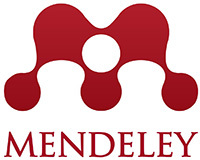The Implementation of PSAK 22 In Business Combinations: A Case Study of PT X Acquiring of PT Y
Keywords:
PSAK 22, Business Combinations, Acquisition, Fair value, Goodwill, Corporate FinanceAbstract
This study examines the application of PSAK 22 on business combinations, focusing on the acquisition of PT Y by PT X. PSAK 22 requires the acquisition method, mandating acquiring entities to measure and recognize identifiable assets, liabilities, and any goodwill from the transaction. Using a qualitative approach, the research employs in-depth interviews with key stakeholders and a literature review of financial reports and academic sources. It explores relevant accounting treatments under PSAK 22 and PSAK 65, ensuring accurate consolidation of assets and liabilities. The findings highlight challenges and advantages experienced by PT X in acquiring PT Y, providing practical insights for companies navigating similar transactions. This research underscores the alignment between PSAK 22 and the practical challenges faced by Indonesian companies, emphasizing regional and industry-specific considerations. The study offers a practical framework for companies applying PSAK 22, enriches academic discourse on business combination accounting in emerging markets, and supports policymakers in refining standards to address industry complexities. By bridging theoretical and practical perspectives, this research provides valuable guidance for improving the implementation of PSAK 22 in Indonesia and similar contexts.
References
Aggarwal, P., & Garg, S. (2022). Impact of mergers and acquisitions on accounting-based performance of acquiring firms in India. Global Business Review, 23(1), 218-236.
Andre, P., Kooli, M., & L’Her, J. F. (2004). The long-run performance of mergers and acquisitions: Evidence from the Canadian stock market. Financial Management, 33(4), 27–43.
Anggoro, R. N., Alveenia, N., & Dwianika, A. (2023). Analisis akuntansi kombinasi bisnis dengan konvergensi IFRS pada laporan keuangan PT Garuda Indonesia Persero (Tbk). Populer: Jurnal Penelitian Mahasiswa, 2(2), 176–187.
Beneish, M. D., Harvey, C. R., & Vorst, P. (2022). Unpatented innovation and merger synergies. Review of Accounting Studies, 1-39.
Bi, X. G., & Gregory, A. (2011). Stock market driven acquisitions versus the Q theory of takeovers: The UKevidence. Journal of Business Finance & Accounting,, 38(5–6), 628–656.
Boateng, A., Naraidoo, R., & Uddin, M. (2011). An analysis of the inward cross-border mergers and acquisitions in the UK: A macroeconomic perspective. Journal of International Financial Management & Accounting, 22(2),91–113.
Botsari, A., & Meeks, G. (2008). Do acquirers manage earnings prior to a share for share bid. Journal of BusinessFinance & Accounting, 35(5–6), 633–670.
Chen, Y., & Zhao, Z. (2019). Research on the performance of cross-ownership M&A of private listed companies in China. Shandong Social Sciences, 2019(11), 140–145.
Conn, R. L., Cosh, A., Guest, P. M., & Hughes, A. (2005). The impact on UK acquirers of domestic, cross‐border,public and private acquisitions. Journal of Business Finance and Accounting, 32(5–6), 815–870.
Cooke, T. E. (1991). . Environmental factors influencing mergers and acquisitions in Japan. Journal of International Financial Management & Accounting, 3(2), 160–188.
Cumming, D., Jindal, V., Kumar, S., & Pandey, N. (2023). Mergers and acquisitions research in finance and accounting: Past, present, and future. European Financial Management, 29(5), 1464-1504.
Darmawan, M. (2022). Ekonomi Keuangan (Ed. 2). Yogyakarta: FEBI UIN Sunan Kalijaga.
Dickerson, A. P., Gibson, H. D., & Tsakalotos, E. (1997). The impact of acquisitions on company performance: Evidence from a large panel of UK firms. Oxford Economic Papers, 49, 344–361.
Fikru, M. G., & Lahiri, S. (2013). Can a merger take place among symmetric firms? . Studies in Microeconomics, 1(2), 155–162.
Filatotchev, I., & Allcock, D. (2010). Corporate governance and executive. Academy of Management, 24(1), 20-33.
Gao, L., & Kling, G. (2008). Equity transfers and market reactions: Evidence from Chinese stock markets. Journal of Emerging Market Finance,, 7(3), 293–308.
Ghosh, A. (2001). Does operating performance really improve following corporate acquisitions. Journal of Corporate Finance, 7(2), 151–178.
Kalra, N., Gupta, S., & Bagga, R. (2013). A wave of mergers and acquisitions: Are Indian banks going up a blind alley? Global Business Review, 14(2), 263–282.
Kurniawati, Y., Afwan, A. S., Pradina, D. A., & Heikal, J. (2024). Valuation analysis of combined company value through acquisition process: Case study of PT Vale Indonesia Tbk and PT Kapuas Prima Coal Tbk. Jurnal Sains dan Teknologi, 6(2), 207-212.
Langhe, T. E., & Ooghe, H. (2001). Are acquisitions worthwhile? An empirical study of the post-acquisition performance of privately held Belgian companies involved in take-overs. Ghent University, Belgium.
Özer, G., Aktaş, N., & Merter, A. K. (2024). The Remuneration-Performance Relationship In Corporate Governance: Evidence From Board Members’ Remuneration And Firm Performance. Doğuş Üniversitesi Dergisi, 25(2), 231-248. https://doi.org/10.31671/doujournal.1329041
Pazarskis, M., Vogiatzogloy, M., & Christodoulou, P. (2006). Exploring the improvement of corporate performance after mergers—The case of Greece. International Research Journal of Finance and Economics, 6, 184–192.
Piesse, J., Lee, C. F., Lin, L., & Kuo, H. C. (2022). Merger and acquisition: Definitions, motives, and market responses. Cham: Springer International Publishing., pp. 877-894.
PricewaterhouseCoopers. (2020). PSAK pocket guide 2020. PwC. https://www.pwc.com/id/en/publications/assurance/psak-pocket-guide-2020.pdf
Ray, K. G. (2022). Mergers and acquisitions: Strategy, valuation and integration. PHI Learning Pvt. Ltd.
Schymik, J. (2018). Globalization and the evolution of corporate governance. European Economic Review, 102, 39-61.
Sharma, D. S., & Ho, J. (2002). The impact of acquisitions on operating performance: Some Australian evidence. Journal of Business Finance & Accounting, 29(1–2), 155–200.
Singh, F., & Mogla, M. (2008). Impact of mergers on profitability of acquiring companies. The ICFAI University Journal of Mergers& Acquisitions, V(2), 60–76.
Wangerin, D. (2019). M&A due diligence, post‐acquisition performance, and financial reporting for business combinations. Contemporary Accounting Research, 36(4), 2344–2378.
Wiyono, W. M. (2021). Dampak merger 3 (tiga) bank syariah BUMN terhadap perkembangan ekonomi syariah. Cakrawala Hukum: Majalah Ilmiah Fakultas Hukum Universitas Wijayakusuma, 23(1), 65-73.
Downloads
Published
How to Cite
Issue
Section
License
Copyright (c) 2025 Fadilah Fajar Bagaskara, Harti Budi Yanti

This work is licensed under a Creative Commons Attribution-ShareAlike 4.0 International License.

This work is licensed under a CC Attribution-ShareAlike 4.0 International License

 Fadilah Fajar Bagaskara
Fadilah Fajar Bagaskara
 Faculty of Economic and Business, Trisakti University, Jakarta
Faculty of Economic and Business, Trisakti University, Jakarta







